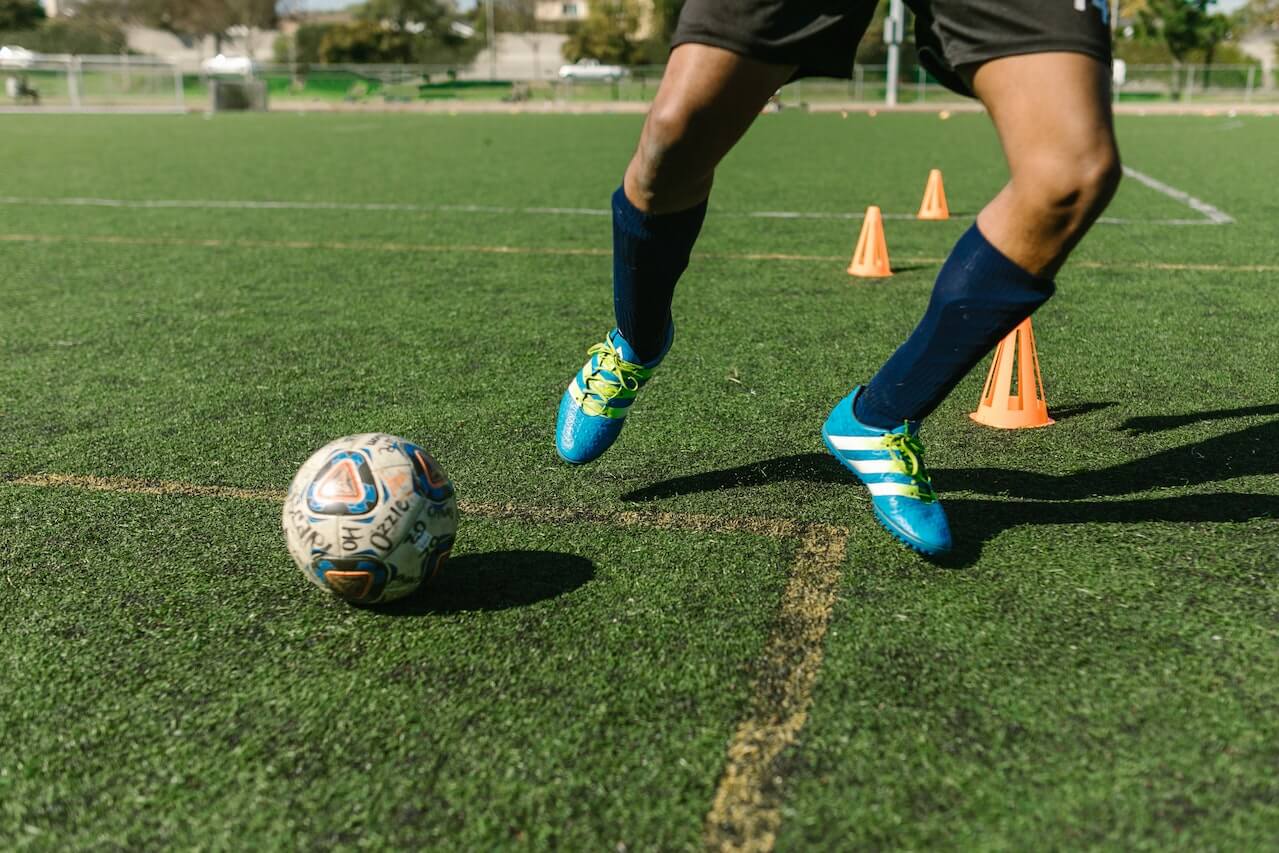Passing drills in football are an essential part of training. They help players develop their passing skills, which is crucial in a sport where precision and accuracy are key. Passing drills are designed to improve a player’s ability to pass the ball quickly and accurately, and to make good decisions under pressure.
There are many different types of passing drills that can be used in football training. Some focus on short passes, while others are designed to help players improve their long-range passing. Some drills are done individually, while others involve working with a partner or in a group. Regardless of the type of passing drill, they all have one thing in common: they are designed to help players improve their passing skills.
Passing drills can be used at all levels of football, from youth leagues to professional teams. They are an important part of any training program, and coaches should make sure that their players are practicing passing drills regularly. By doing so, players will develop the skills they need to be successful on the field, and will be better prepared to handle the pressures of a competitive game.
Importance of Passing Drills
Passing is one of the most fundamental skills in football, and it is essential for any successful team. Passing drills are an important part of any football training regimen, and they help players develop the skills they need to succeed on the field.
One of the key benefits of passing drills is that they help players improve their accuracy and precision when passing the ball. By practicing different types of passes, such as short passes, long passes, and diagonal passes, players can learn to control the ball and deliver it accurately to their teammates.
Passing drills also help players develop their communication skills, as they learn to communicate effectively with their teammates and make quick decisions on the field. This is especially important in team sports like football, where communication and teamwork are essential for success.
In addition to improving accuracy and communication, passing drills can also help players develop their speed and agility. By practicing quick passes and moving the ball quickly around the field, players can improve their footwork and reaction time, which can help them become more effective players overall.
Overall, passing drills are an essential part of any football training regimen, and they can help players develop the skills they need to succeed on the field. By focusing on accuracy, communication, and speed, players can become more effective passers and more valuable members of their team.
Types of Passing Drills
Passing drills are an essential part of football training. They help players develop their passing skills, improve their accuracy, and enhance their decision-making abilities. Here are some of the most common types of passing drills:
- Two-touch passing: This drill involves two players passing the ball back and forth using only two touches. The aim is to improve passing accuracy and control.
- One-touch passing: In this drill, players pass the ball to each other using only one touch. The aim is to develop quick thinking and decision-making skills.
- Passing and moving: This drill involves players passing the ball to a teammate and then moving into space to receive the ball back. The aim is to improve passing accuracy and movement off the ball.
- Long-range passing: This drill focuses on developing a player’s ability to pass the ball over long distances. The aim is to improve passing accuracy and vision.
- Passing under pressure: This drill involves players passing the ball while under pressure from defenders. The aim is to improve passing accuracy and decision-making skills under pressure.
These passing drills can be adapted to suit different levels of ability and can be used in a variety of training sessions. Coaches should focus on developing a variety of passing skills to ensure that their players are well-rounded and able to adapt to different game situations.
Setting Up Passing Drills
Properly setting up passing drills is crucial to the success of any football team. Here are a few key things to keep in mind when setting up your drills:
- Field size: Make sure the field size is appropriate for the number of players participating in the drill. A smaller field is better for more precise passing drills, while a larger field may be better for more advanced drills.
- Number of players: The number of players participating in the drill will determine the type of drill you choose. For example, a two-player drill will be different than a six-player drill.
- Equipment: Make sure you have all the necessary equipment, such as cones, balls, and goals. Having everything ready before the drill starts will save time and make the drill run more smoothly.
Once you have these basics covered, you can start setting up your drills. Here are a few examples of passing drills you can use:
| Drill Name | Description |
|---|---|
| Two-Person Passing | Two players stand across from each other and pass the ball back and forth. This drill is great for practicing accuracy and timing. |
| Passing Square | Four players stand in a square and pass the ball to each other. This drill is great for practicing communication and teamwork. |
| Passing Relay | Two teams line up on opposite sides of the field. The first player on each team passes the ball to the next player in line, who then passes it back. The first team to complete the relay wins. |
Remember, the key to successful passing drills is to keep them varied and challenging. By incorporating a variety of drills and constantly pushing your players to improve, you’ll see great results on the field.
Common Mistakes to Avoid
While passing drills can be a great way to improve your football skills, there are some common mistakes that many players make. Here are a few things to avoid:
- Not focusing on technique: It’s easy to get caught up in the speed and intensity of passing drills, but it’s important to remember that technique is key. Make sure you’re using proper form and following through with your passes.
- Ignoring footwork: Footwork is just as important as technique when it comes to passing. Make sure you’re stepping into your passes and using your entire body to generate power.
- Being too predictable: If you always pass the ball in the same direction or to the same player, your opponents will catch on quickly. Mix things up and try to keep the defense guessing.
- Not communicating: Communication is essential in football, and passing drills are no exception. Make sure you’re talking to your teammates and letting them know where you want the ball.
- Forgetting to practice under pressure: Passing drills are great for building skills, but they don’t always simulate the pressure of a real game. Make sure you’re also practicing passing under pressure and in game-like situations.
By avoiding these common mistakes and focusing on proper technique, footwork, and communication, you can take your passing skills to the next level.
Conclusion
Passing drills are an essential part of football training. They help players develop their passing accuracy, speed, and decision-making skills, which are crucial on the pitch. By incorporating passing drills into your training sessions, you can improve your team’s overall performance and increase your chances of winning matches.
There are many different passing drills that you can use in your training sessions, each with its own benefits and challenges. Some drills focus on short passes, while others focus on long passes or diagonal passes. Some drills involve stationary passing, while others involve moving targets or passing under pressure.
It’s important to vary your passing drills to keep your players engaged and challenged. You can also modify drills to suit the specific needs of your team. For example, if your team struggles with long passes, you can focus on drills that help them improve their long passing accuracy and distance.
Remember that passing drills are just one part of a comprehensive football training program. To achieve success on the pitch, you need to combine passing drills with other types of training, such as fitness training, tactical training, and match simulations. By taking a holistic approach to your training, you can help your players reach their full potential and achieve their goals.







